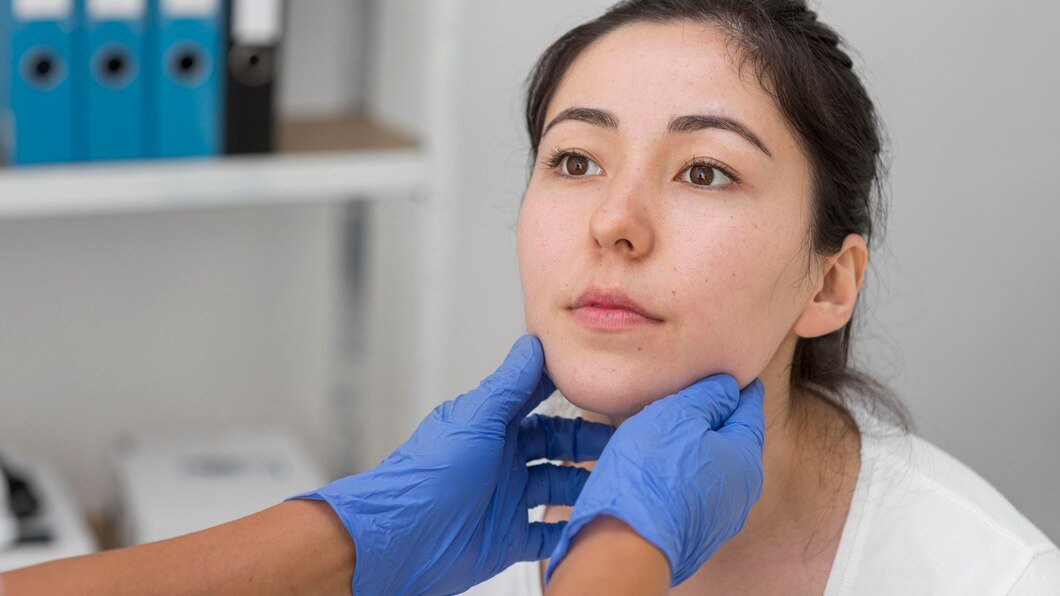Health
Plastic Surgeons and Ozempic: Enhancing Facial Features for Diabetic Patients
Facial Features the intersection between plastic surgery and pharmaceuticals has opened new avenues

In recent years, the intersection between plastic surgery and pharmaceuticals has opened new avenues for enhancing facial features, especially for individuals managing chronic conditions like diabetes. One such medication gaining attention for its potential benefits in this realm is Ozempic. This article aims to delve into the fusion of plastic surgery and Ozempic, exploring their combined effects on facial aesthetics and overall well-being.
Understanding Ozempic
Ozempic, a brand name for semaglutide, belongs to a class of medications known as GLP-1 receptor agonists. Primarily prescribed for type 2 diabetes management, Ozempic works by mimicking the action of the hormone GLP-1, which helps regulate blood sugar levels. By stimulating insulin production and decreasing glucagon secretion, Ozempic helps control blood sugar levels in diabetic individuals.
The Impact of Diabetes on Facial Features
Diabetes is known to affect various organs and systems in the body, including the skin. Facial changes associated with diabetes can include skin dryness, thinning, and decreased elasticity, leading to wrinkles and sagging. Additionally, diabetes can impair the body’s ability to heal wounds, which may affect recovery from surgical procedures.
Plastic Surgery Solutions for Diabetic Patients
Despite the challenges posed by diabetes, many individuals seek plastic surgery to address concerns related to facial aging and appearance. Common procedures for facial rejuvenation include facelifts, eyelid surgery, and injectable treatments like Botox and dermal fillers. These techniques aim to restore youthful contours, reduce wrinkles, and improve overall facial harmony.
Combining Ozempic with Plastic Surgery
While the simultaneous use of Ozempic and plastic surgery may raise concerns about potential interactions or complications, research suggests that the two can be safely combined in most cases. However, it is essential for patients to disclose all medications they are taking, including Ozempic, to their plastic surgeon. This ensures comprehensive pre-operative evaluation and personalized care.
Finding the Right Plastic Surgeon
Selecting a qualified and experienced plastic surgeon is crucial for achieving optimal results and minimizing risks, especially for diabetic patients. Factors to consider when choosing a surgeon include board certification, specialized training in facial procedures, and a track record of successful outcomes. Additionally, seeking referrals from trusted sources and reading patient reviews can help assess a surgeon’s reputation.
Preparing for Plastic Surgery as a Diabetic Patient
Preparation for plastic surgery as a diabetic patient involves careful coordination between the plastic surgeon and the patient’s primary care physician or endocrinologist. It may include optimizing blood sugar control, adjusting medication dosages, and undergoing pre-operative medical evaluations to ensure surgical safety.
Recovery Process and Post-Surgical Care
The recovery process after plastic surgery requires diligent adherence to post-operative instructions provided by the surgeon. Diabetic patients may need additional monitoring of blood sugar levels during the recovery period to prevent complications such as infection or delayed wound healing. Proper wound care, hydration, and avoiding smoking are essential for promoting optimal healing.
Potential Benefits of Ozempic in Plastic Surgery Patients
Emerging evidence suggests that Ozempic may offer additional benefits for plastic surgery patients, including improved wound healing and reduced inflammation. Studies have shown that GLP-1 receptor agonists like Ozempic exhibit anti-inflammatory properties and promote tissue regeneration, which could enhance surgical outcomes and recovery.
Risks and Considerations
While combining Ozempic with plastic surgery is generally considered safe, certain risks and considerations merit attention. These may include potential interactions with anesthesia or other medications, as well as the risk of hypoglycemia during the perioperative period. Close communication between the patient, plastic surgeon, and healthcare team is essential for mitigating these risks.
Long-Term Results and Maintenance
Maintaining the results of plastic surgery requires a holistic approach that encompasses healthy lifestyle habits and regular skincare maintenance. Diabetic patients are encouraged to prioritize blood sugar control, adopt a balanced diet, and engage in regular exercise to support overall well-being and facial aesthetics. Additionally, sun protection and skincare products containing antioxidants can help preserve youthful skin.
Conclusion
the combination of plastic surgery and Ozempic holds promise for diabetic patients seeking to enhance their facial features and improve their quality of life. By addressing the effects of diabetes on facial aesthetics and leveraging the benefits of Ozempic in promoting healing and recovery, individuals can achieve natural-looking results with reduced risks. However, careful patient selection, thorough pre-operative evaluation, and close post-operative monitoring are essential to ensure safe and successful outcomes.
FAQs
Can diabetic patients undergo plastic surgery safely?
Yes, many diabetic patients successfully undergo plastic surgery with proper pre-operative evaluation and management of blood sugar levels.
Is Ozempic safe to use before and after plastic surgery?
While Ozempic is generally considered safe, patients should inform their plastic surgeon about all medications they are taking to ensure safety and optimal surgical outcomes.
How long does it take to recover from plastic surgery when using Ozempic?
Recovery time varies depending on the type of procedure and individual healing capacity. Following post-operative instructions and monitoring blood sugar levels can help expedite recovery.
Are there any specific risks associated with combining Ozempic and plastic surgery?
While rare, potential risks include interactions with anesthesia and medications, as well as the risk of hypoglycemia. Close communication with healthcare providers is essential to mitigate these risks.
Can plastic surgery improve facial features affected by diabetes-related changes?
Yes, various plastic surgery techniques can address facial concerns associated with diabetes, such as sagging skin and volume loss, leading to improved facial aesthetics and self-confidence.
Table of Contents
-

 Business9 months ago
Business9 months agoSepatuindonesia.com | Best Online Store in Indonesia
-

 Technology5 months ago
Technology5 months agoTop High Paying Affiliate Programs
-

 Tech14 minutes ago
Tech14 minutes agoUnderstanding thejavasea.me Leaks Aio-TLP: A Comprehensive Guide
-

 Tech9 months ago
Tech9 months agoAutomating Your Window Treatments: The Advantages of Auto Blinds
-

 Tech9 months ago
Tech9 months agoUnleash Your Potential: How Mecha Headsets Improve Productivity and Focus
-

 Instagram2 years ago
Instagram2 years agoFree Instagram Follower Without Login
-

 Instagram2 years ago
Instagram2 years agoFree Instagram Auto Follower Without Login
-

 Business12 months ago
Business12 months agoFollow These 5 Tips To Avail Personal Loans At Lower Interest Rates



















